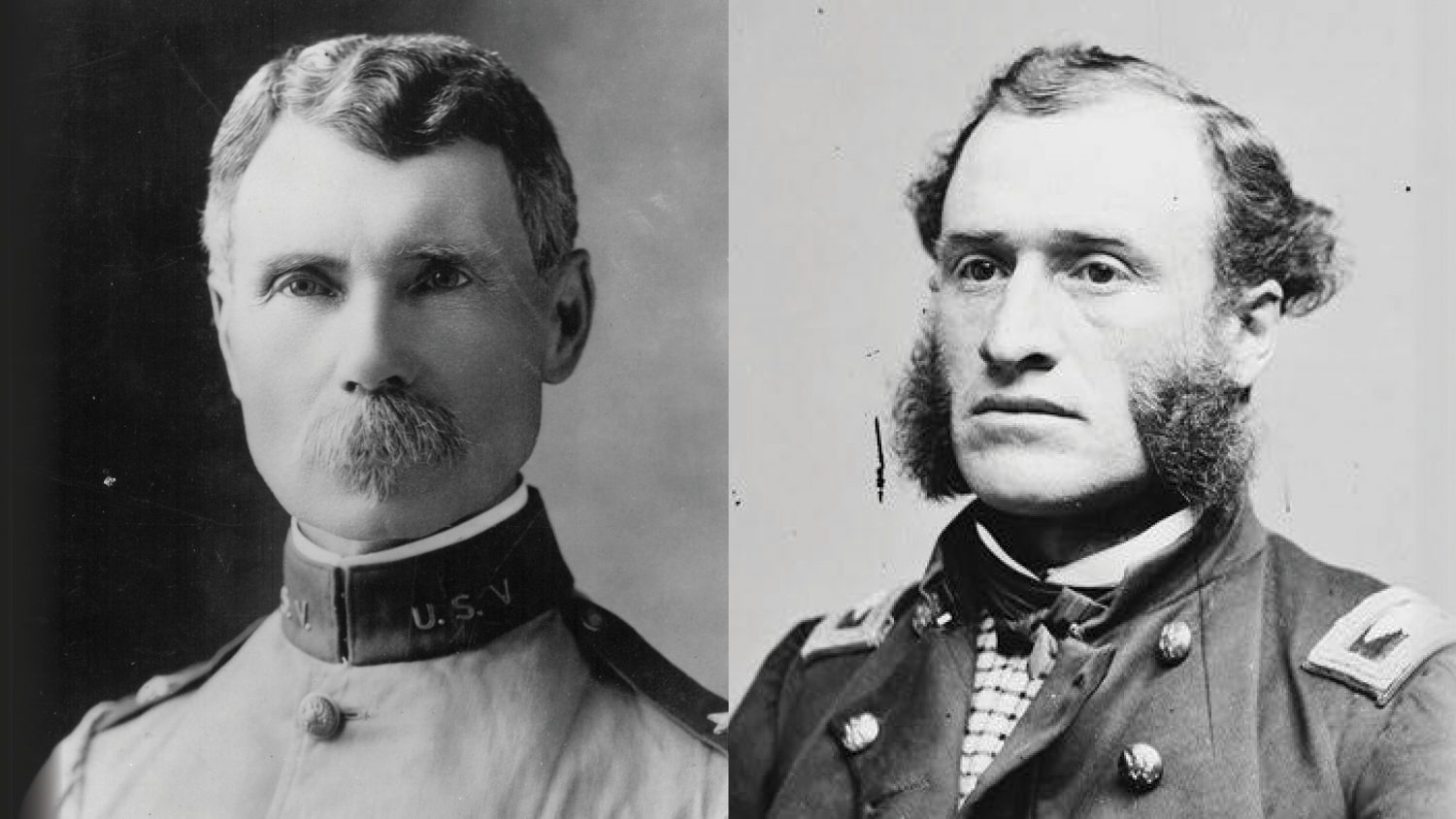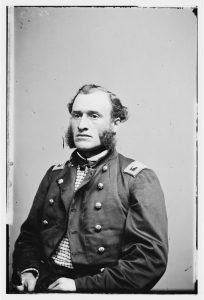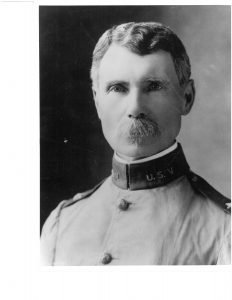#FlashbackFriday: Who Founded the Exchange? Both These Heroes Have a Case.

With the Exchange preparing to mark its 127th anniversary July 25, #FlashbackFriday flashes back to the late 1800s and to two key figures in pre-Exchange history.
One, Maj. Theodore Schwan, is often referred to as the “Founder of the Exchange.” But he had an important precursor in Col. Henry Morrow, who developed the concept that evolved into the Exchange.

Col. Henry Morrow (Library of Congress).
In 1880 at Vancouver Barracks, in what is now Washington state, Morrow, commander of the 21st Infantry Regiment, opened a tiny canteen to keep his Soldiers on base and away from the nearby town’s temptations.
In this combination social club-general store, Soldiers could buy food, beverages, newspapers and magazines. They could also unwind by playing billiards, cards and other games, and purchase paper, pens, ink and stamps to write letters to their loved ones back home.
Morrow’s idea proved successful, and canteens opened at military posts throughout the West. But there were also posts served by post traders, who ran less wholesome establishments that were part general store, part saloon. Soldiers were charged exorbitant prices and lent money at excessive interest rates, leading to deep debt. They were also encouraged to drink, causing disciplinary problems.
Some posts had neither post traders nor canteens, leading Soldiers to find off-post entertainment, often at places where they would get into trouble or be exploited by unscrupulous saloon keepers and business owners.
In December 1888, the secretary of war called for a study of canteens and post traders, which is where Schwan comes in. Schwan, the Assistant Adjutant General, prepared a report that spelled out the philosophy, concepts and principles of how post canteens on Army installations should operate.

Maj. Theodore Schwan, regarded by some military experts as the founder of the Exchange system. Schwan retired as a major general in 1901. (National Archives)
Like Morrow, Schwan—a 30-year-plus Army Veteran—was acutely aware of the problems servicemen faced in seeking wholesome facilities for off-duty amusement. His recommendations stated that the post canteens should supply troops with necessary goods at moderate prices, as well as providing the means for exercise, billiards and other games. Wherever practical, the canteen was to be located in the same building as the library or reading rooms.
Schwan’s report is considered a landmark in the development of the Exchange systems. The basic philosophy, concepts and principles, as spelled out in his recommendations, remain valid today. This is why he is recognized as the founder of the Exchange system.
A couple of years after his report, in 1892, the War Department changed the name “post canteen” to “post exchange.” On July 25, 1895, the War Department authorized local commanders to open post exchanges, which would operate under the same guidelines found in Schwan’s report.
Those rudimentary post exchanges evolved into today’s Army & Air Force Exchange Service.
Morrow and Schwan were both Civil War heroes who had long, distinguished military careers.
Born in July 1829 in Virginia, Morrow was 17 when he enlisted in the D.C. and Maryland Infantry Regiment at the onset of the Mexican-American War, serving as a private from May 1846 to May 1847.
During the Civil War, he helped organize the all-volunteer 24th Michigan Infantry, which would fight in the Battle of Gettysburg in 1863. The 24th Michigan suffered heavy casualties, with 363 men killed, wounded, or captured — a 73% loss. At one point, Morrow lifted the regimental flag, rallying men around it, and was struck in the head and wounded.
Making his way into town, Morrow was captured by Confederate soldiers but was not taken with the Confederate Army upon their retreat. Instead, he remained in town, receiving treatment for his injury. He returned to lead the 24th Michigan through the remainder of the war, suffering injuries again at the Battle of the Wilderness in May 1864 and for a third time at Petersburg in February 1865. Brevetted a brigadier general for “distinguished and conspicuous gallantry,” Morrow was discharged from the army on July 19, 1865.
After the war, he was commissioned lieutenant colonel in the 36th Infantry in July 1866, the promoted to colonel of the 21st Infantry in April 1879. He died Jan. 31, 1891, in Hot Springs, Arkansas.
Born in Germany in 1841, Schwan immigrated to the United States, where he joined the Army in 1857, when he was about 16 years old. In 1898, he was awarded the Medal of Honor for most distinguished gallantry in action during the Civil War. On Oct. 1, 1864, at Peebles Farm, Virginia, Schwan risked his life to drag a wounded and helpless officer to the rear while their regiment was retreating, thus saving the officer from death or capture.
He also served with distinction in the Philippines during the Spanish-American War. He rose steadily in the ranks throughout his career, entering the Army as a private and retiring as a major general in 1901. He died in May 1926 in Washington at age 85. He is buried in Arlington National Cemetery.
Sources: One Hundred Years of Service, A History of the Army and Air Force Exchange Service; Exchange Post archives; National Park Service (Gettysburg); Congressional Medal of Honor Society.

